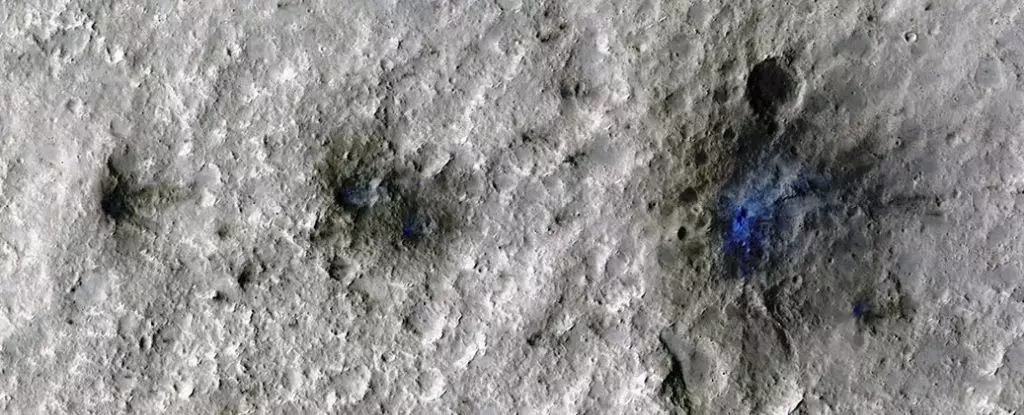The recent analysis of data collected by a seismometer on Mars has shed light on a startling reality – the red planet is under a relentless barrage of meteorite impacts. The team of scientists behind this discovery has revealed that Mars endures daily bombardment from rocks the size of basketballs crashing into its surface. This revelation has forced us to rethink our understanding of Mars and the constant chaos it faces from the vast expanse of space.
The Mars InSight lander, during its mission, provided us with groundbreaking insights into the inner workings of Mars. Contrary to our previous assumptions, Mars is far from being a dormant planetary body. InSight uncovered a plethora of tectonic and magmatic activities that were previously unknown to us, along with exposing the composition of the planet’s interior. Additionally, the seismometer on Mars detected the faint tremors of impacts, giving us a new means of estimating the frequency of meteorite strikes on the red planet.
Understanding the rate at which meteorites strike Mars is crucial for calibrating our comprehension of the planet’s geological history. The formation of craters on the planetary surface serves as a key indicator of its age. By gauging the frequency of crater formation, we can deduce the age of various Martian terrains. This ‘cosmic clock’ allows us to piece together a timeline of Mars’s evolution over the eons. Moreover, this knowledge may not only enlighten us about Mars but potentially aid in dating surfaces on other celestial bodies within the Solar System.
While Earth witnesses thousands of meteors entering its atmosphere annually, most disintegrate high above us, without us even noticing. Mars, on the other hand, lacks the robust atmospheric shield that Earth possesses. Its extremely thin atmosphere allows meteorites to reach the surface relatively unimpeded. Further, Mars’s proximity to the asteroid belt enhances the likelihood of frequent impacts from space debris. The juxtaposition between Earth’s and Mars’s protective measures highlights the vulnerability of the red planet to celestial collisions.
Until the Mars InSight mission, estimates of the impact rate on Mars were primarily based on satellite imagery. While this method was effective, it had its limitations. The Mars InSight seismometer, with its high sensitivity, became a game-changer in this regard. By combining data from satellite observations and seismometer readings, scientists were able to calculate a global impact rate on Mars. The findings indicated an alarming rate of impacts, with around one crater-forming impact occurring daily on Mars.
The discovery of Mars’s constant bombardment has significant implications for future missions to the red planet. The information gleaned from the impact rate not only aids in unraveling Mars’s geological past but also serves as a valuable resource for planning human expeditions to Mars. Understanding the risks posed by meteorite impacts is crucial for ensuring the safety and success of future exploration endeavors. This pioneering research marks a crucial step towards unraveling the mysteries of Mars’s turbulent history and shaping the future of space exploration.


Leave a Reply